We all know about the amazing Striped Bass fishing the Chesapeake Bay offers. However, there’s one other fish in the bay that frustrates, mystifies, and brings excitement to anglers each year – Cobia. They’re one of the largest gamefish around, as well as the most unpredictable species you can catch out here. That’s why Cobia fishing in the Chesapeake Bay is one of the most unique adventures you’ll have in these waters.

If you, like us, are a fan of the “Man in the Brown Suit,” keep reading. We’ve put together a love letter to these fish showing how and where you can catch them. In the latter part of the article, we also provide you with some information about the local regulations and the best seasons to fish for Cobia around these parts.
Why Cobia?
Beaten only by the rare Sturgeon and Sharks, Cobia are among the biggest fish you can find in the Chesapeake Bay. With their size comes power, giving these fish raw strength that’ll never fail to get your adrenaline pumping. Cobia are also armed with a fighter’s temper, willing to battle the angler until the bitter end.

But what’s almost as amazing as the fight Cobia put up is their sheer unpredictability. You can never truly know when they’ll show up. However, when they do visit your waters, they’re not that hard to entice. They’ll take a variety of bait and lures and respond well to both trolling and chumming. Once you get a bite, Cobia will make your Chesapeake Bay fishing adventure one you’ll never forget.
How to Fish for Cobia in the Chesapeake Bay
So far, we’ve given you a little taste of the techniques you’ll use while fishing for Cobia in the Chesapeake Bay. Now, it’s time to expand upon exactly how these different methods work and add a third technique to the mix. Have a look…
Chumming
In terms of its effectiveness, chumming is one of the best ways to lure in Cobia. At its core, this technique is fairly straightforward. It involves bringing plenty of smelly, cut bait, putting it in a basket, and chucking it into the water. Then, you rig your rods, lower the bait into the water and wait for a strike.
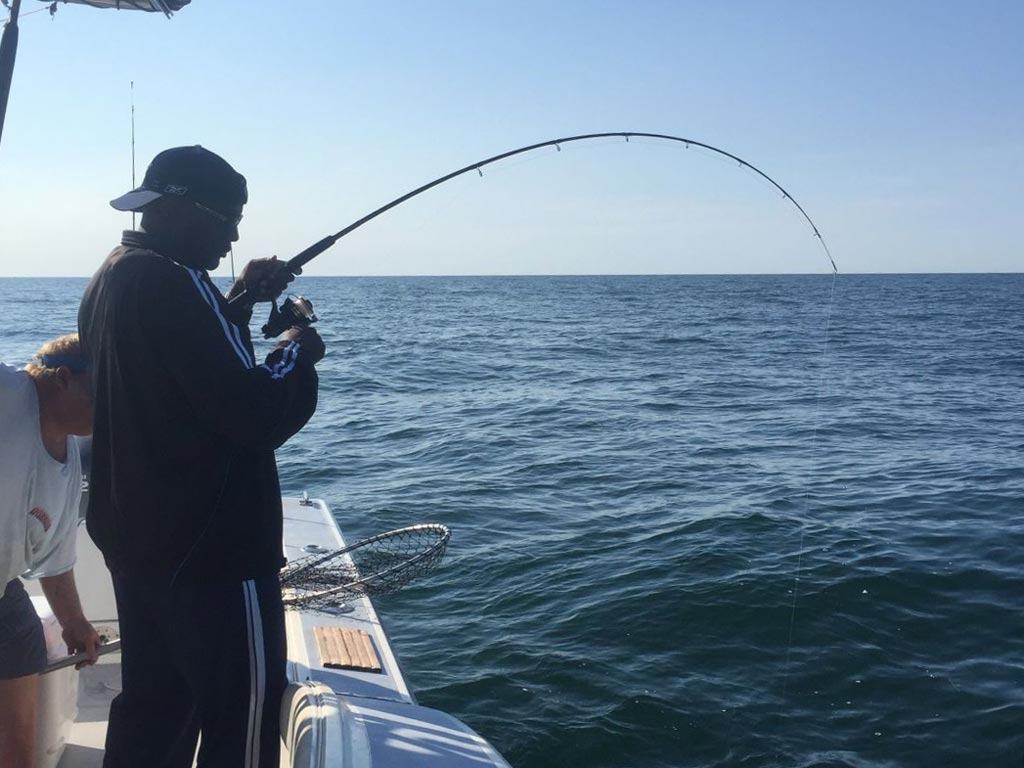
Where it gets a bit more complicated though, is figuring out where to chum the waters. In the Chesapeake Bay, you’ll typically have the most success chumming for Cobia around different underwater ledges, humps, and ledges. Ideally, you should fish when the waters are slow, before slack tide, or right when the tides begin to pick up again.
Trolling
As far as different techniques go, trolling is definitely among the most effective and most versatile ones. It works for so many different fish, Cobia included. Trolling is also a very beginner-friendly technique, especially if you’re fishing aboard a charter. Your captain will set up the trolling spread, bait the hooks, and drive the boat over prospective structures, with your only task being to reel in the fish.
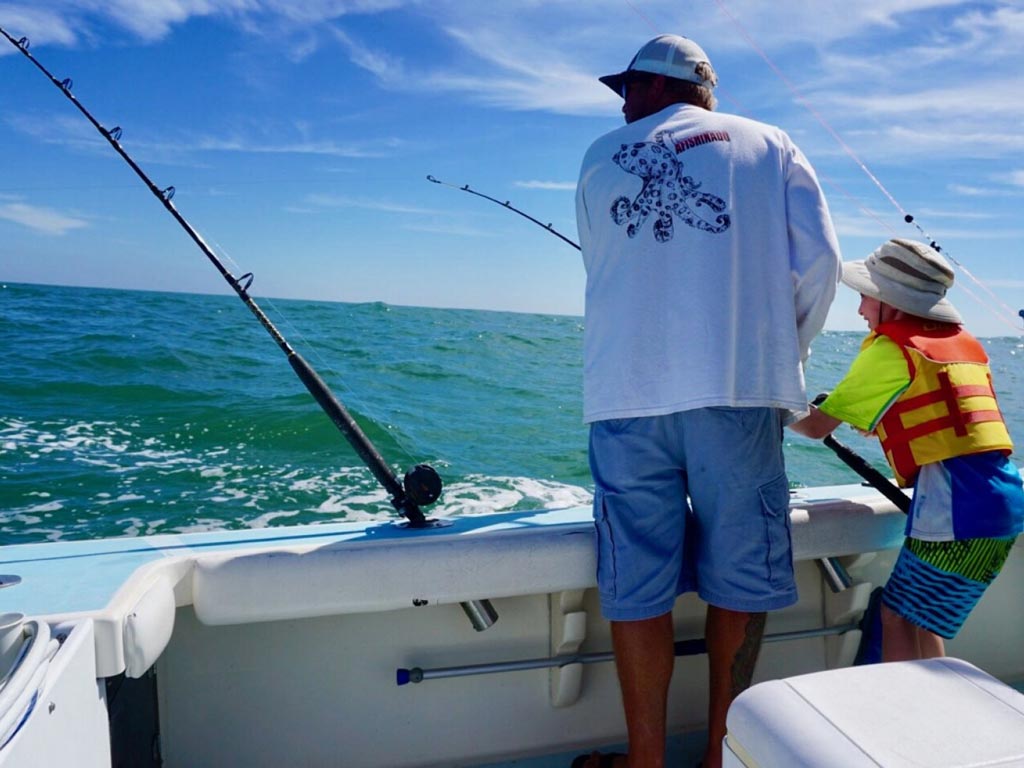
When fishing for Cobia in the Chesapeake Bay, you’ll usually hit all the same ledges, lumps, and dropoffs you’d visit when chumming. Many local anglers like to troll tubes for Cobia, the same ones they use when fishing for Striped Bass. Really, the only downside to trolling is that you’ll have to enjoy the bay’s scenery while you wait for the fish to bite.
Sight Fishing
The first two techniques we named are tried and tested. But if we’re talking about the most exciting way to chase after Cobia, it’s definitely sight fishing. To do this, you’ll need to hop aboard a Chesapeake Bay charter boat that’s got a platform or a tower. It’s where you’ll be climbing to get a good look through the waters and spot your prized catch.
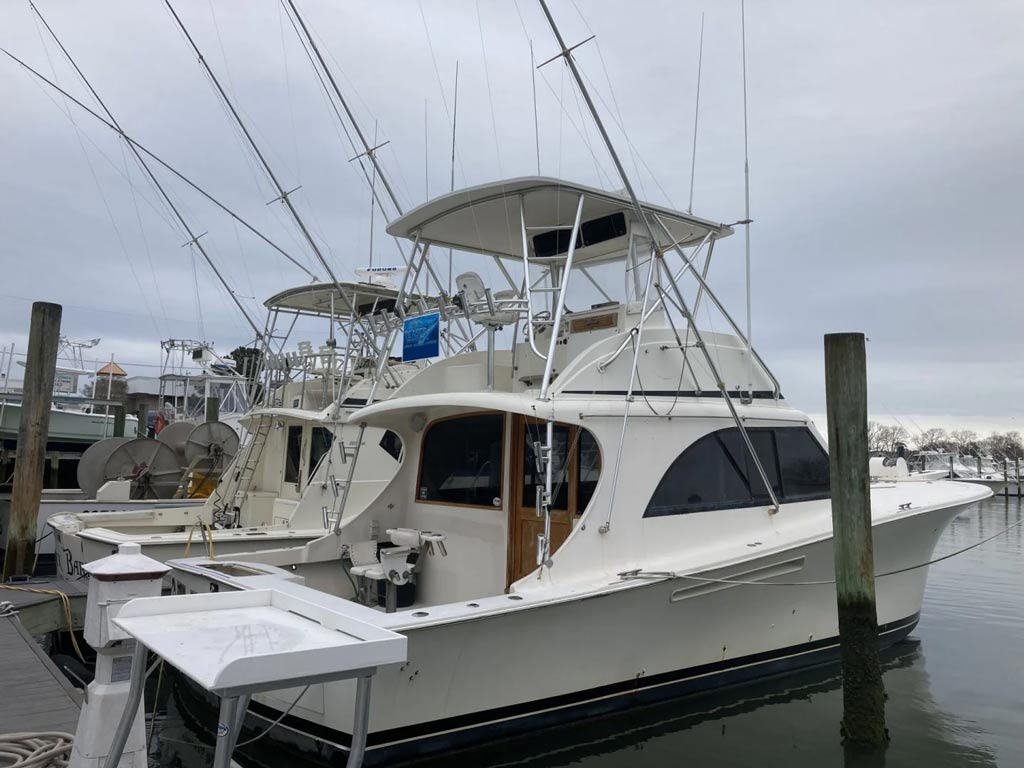
Sight fishing is best suited for days when there’s plenty of sunlight to allow you to see Cobia swimming. Polarized sunglasses are a must for these trips, as you’d otherwise only be able to see light reflect off the water surface. When you spot your catch, it’s all about nailing that cast and drawing the fish in towards your bait. Because you’ll need to know how to cast well, sight fishing is the most challenging technique of the three.
Chesapeake Bay Cobia Fishing Gear
Now that we’ve covered the usual ways anglers in the Chesapeake Bay fish for Cobia, it’s time to dig into the equipment you’ll use. Of course, there are many different options and setups, but let’s go over the most common ones.
Bait, Line, and Hooks
Live bait is considered the most effective type of bait used for Cobia fishing. In the Chesapeake Bay, this means you’ll often use live eels or spot to try and get a bite. Alternatively, many anglers use cut menhaden, which makes for great chum, as well as peeler crabs. Finally, brightly colored jigs are also a popular choice, especially if you’re sight fishing for Cobia.
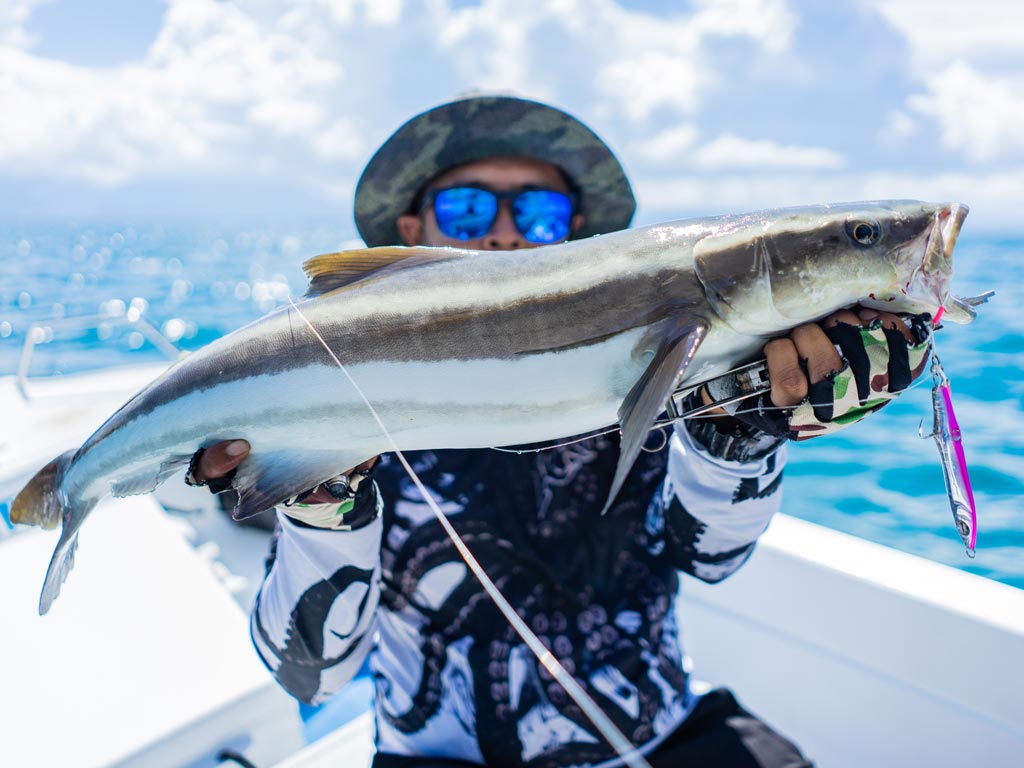
Considering how big Cobia can get and how strong they are, 40–60 lb test leader is what you’d typically go for when fishing for them. As far as hook sizes go, stick to those ranging from 6/0 to 10/0.
Rods and Reels
Ask a hundred anglers and you’ll probably get a hundred different opinions on rod and reel setup. However, you can probably guess by now that you’ll need medium or heavy tackle to wrestle these tuxedoed bruisers. You can opt for either conventional or spinning gear, as long as they’re in the 30 lb or heavier class.
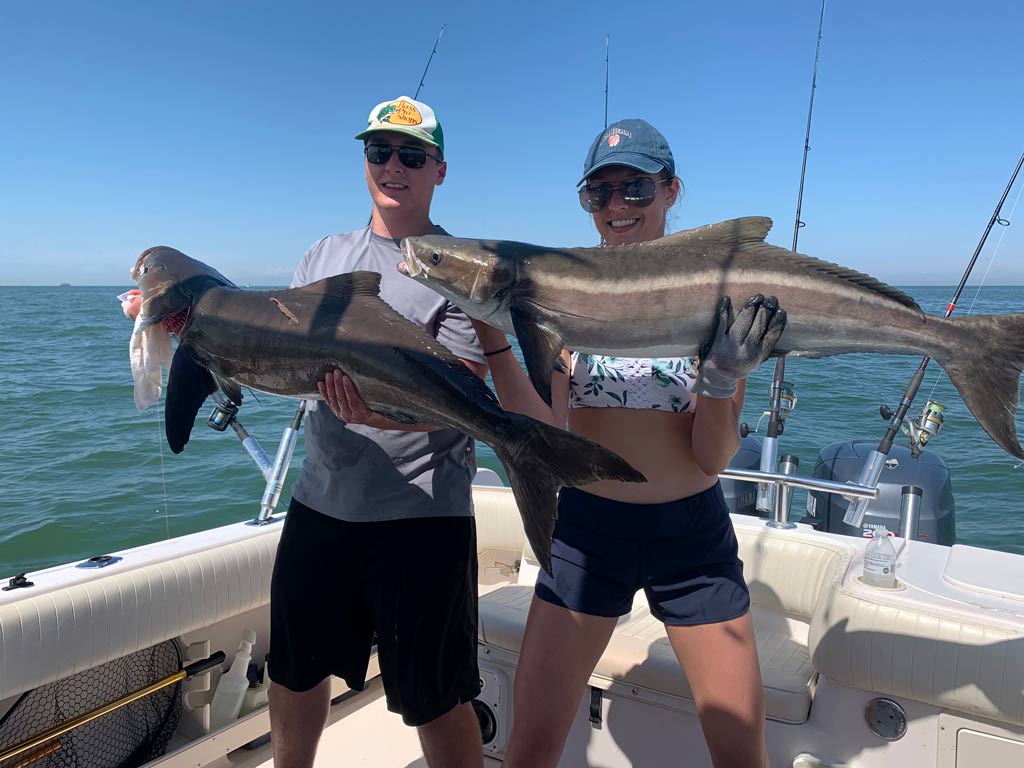
In terms of length, medium-heavy action rods from 6’5″ to 8′ should do the trick. If you’re sight fishing, you should make sure you’re comfortable with the rod you’ll be casting with. With other techniques, such as trolling and chumming, it’s more about just making sure the gear you’re fishing with can stand up to the mighty Chesapeake Bay Cobia.
Where to find Cobia in the Chesapeake Bay?

Cobia come to the Chesapeake Bay by migrating northwards along the East Coast. As they do so, they move close to shore, which is why you can find them in these waters. So let’s go over a few areas where you can go fishing for Cobia in the Chesapeake Bay.
- Hampton, VA: If you find yourself in the Lower Bay, try fishing for Cobia around Buckroe or Grandview Beach near Hampton. There are several river mouths in the area where you’ll often get the chance to reel in one of these sleek fish.
- Chesapeake Bay Bridge-Tunnel: The area from Cape Charles and south towards CBBT turns into a Cobia playground each summer. Seek out the different humps and ledges underwater and you won’t be far from catching some fish.
- Target Ships: The middle portion of the bay is home to several shipwrecks that were formerly used for target practice. These serve as popular spots for multiple Chesapeake Bay fish, including Cobia. Northwest of Smith Island, you’ll find the Old Hannibal wreck, while the waters surrounding Tangier Island are also known as productive Cobia fishing grounds.
- Rappahannock River: The waters right around where the Rappahannock River flows into the Chesapeake Bay are another Cobia fishing area you can explore. The local anglers like to chum the waters between Windmill Point and Stingray Point, which often draws in the hungry Cobia.
- Coastal Shoals: As you leave the Chesapeake Bay, you can pay a visit to Nautilus Shoal, a fishing spot right at the bay exit. As you move north along the ocean coast you’ll find several other shoals, all serving as Cobia hotspots. The last of these is Fenwick Shoal, located northeast of Ocean City.
Best Times to Fish For Chesapeake Bay Cobia
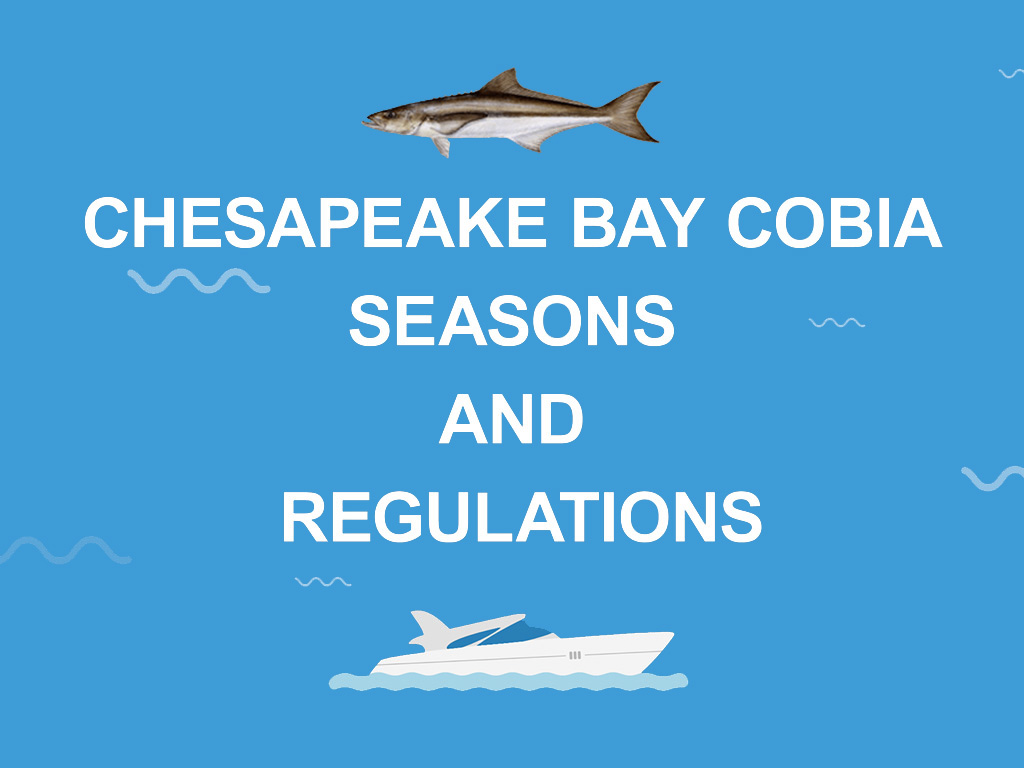
While there are many different spots throughout the Chesapeake Bay where you can go fishing for Cobia, they’re not always there. In fact, you’ll only have a shot to catch these magnificent fish if you visit the bay during summer. Cobia typically show up around June and stay in the general area up until late September.
But although you may spot Cobia swimming about, you still need to pay heed to the fishing regulations. These can change from season to season and they sometimes differ between the two states the Chesapeake Bay runs through. Depending on where you fish, Maryland or Virginia Cobia regulations will apply, so make sure to check them out prior to your trip.
Finally, unless you hook up with one of the numerous Chesapeake Bay fishing charters, you’ll need to get your fishing license. Luckily, Maryland and Virginia have fishing license reciprocity in place, meaning you can fish the Chesapeake Bay on either state’s license.
Cobia Fishing in the Chesapeake Bay: An Adventure Like No Other
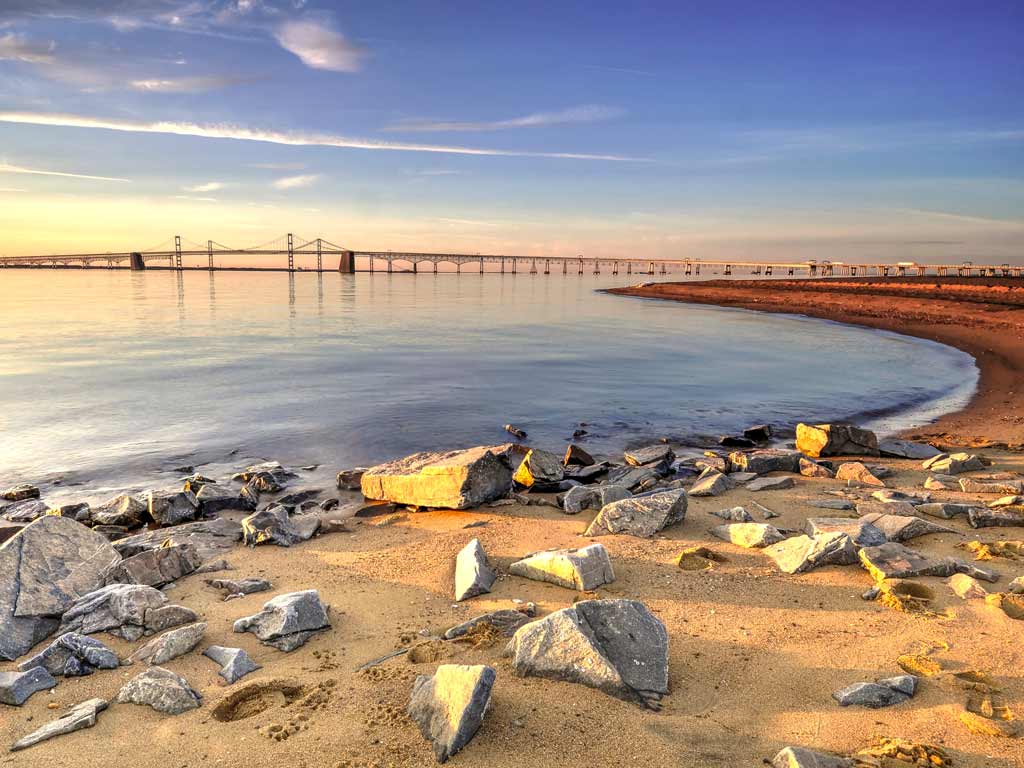
Cobia are just a small part of the grand fishery that is the Chesapeake Bay. However, when it comes to the excitement and the challenge they provide, they’re among the best fish you can catch out here. Also, we didn’t mention it so far, but in addition to the thrilling fight they put up, Cobia are absolutely delicious. So if you’re searching for a unique experience with some extremely tasty results, Cobia fishing is where it’s at.
What’s your favorite part about fishing for Cobia in the Chesapeake Bay? Are they your bucket list fish? Let us know in the comments below!
The post Cobia Fishing in the Chesapeake Bay: The Complete Guide appeared first on FishingBooker Blog.
https://ift.tt/KZOJvpq
0 Comments
Enregistrer un commentaire